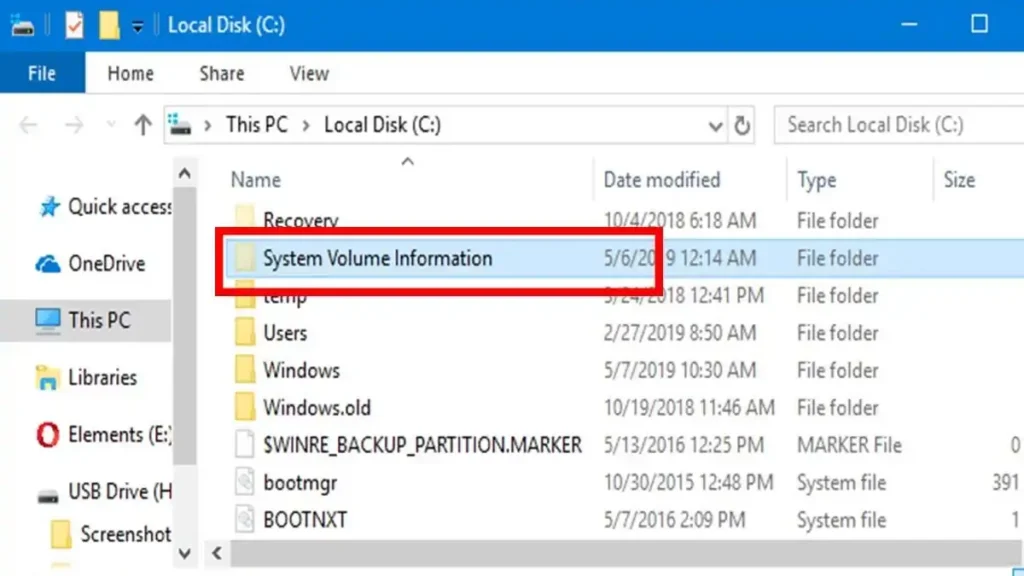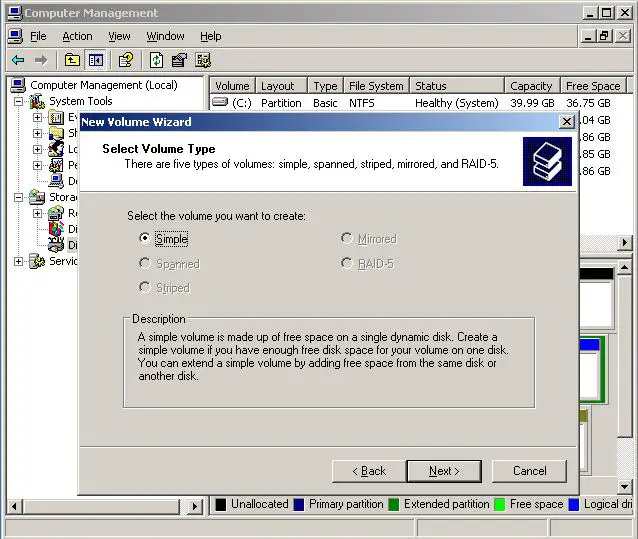If you’ve ever explored your hard drive and stumbled upon a mysterious folder named “System Volume Information,” you’re not alone. This article aims to explain the purpose and significance of this enigmatic folder in the Windows operating system.
In this article:
- What Is the System Volume Information Folder?
- Why Does It Exist?
- How to Access the System Volume Information Folder
- Managing Space Usage
- Frequently Asked Questions
- The concept of Volume in MS-DOS and earlier Microsoft Windows OS
- Conclusion
1. What Is the System Volume Information Folder?
The System Volume Information (SVI) folder is an essential system directory automatically created and maintained by the Windows operating system on every partition or volume. The folder is hidden and is both system and read-protected, making it inaccessible to users by default.

Technical Specifics:
- Location: Found at the root directory of each volume (e.g.,
C:\System Volume Information). - Attributes: Hidden, System, and Read-Only.
- Access Rights: Limited to the SYSTEM account and Administrators with elevated permissions.
- File System Support: Present on volumes formatted with NTFS, exFAT, or FAT32 file systems.
Inside the SVI Folder:
- System Restore Points: Binary files that are snapshots of the system state.
- Volume Shadow Copies: Enables backup of locked files.
- Indexing Database: Files for the Windows Search service to speed up file searches.
- Distributed Link Tracking Service Databases: Ensures the integrity of shortcuts and OLE links.
- Content Indexing Service Databases: Quickens file search.
- NTFS Disk Quota Settings: Maintains disk quotas for each user.
- DFS Replication Service Databases: Used for Distributed File System replication.
2. Why Does It Exist?
The SVI folder serves multiple critical functions in maintaining system integrity, data recovery, and system performance. The folder is like a Swiss Army knife for system administrators, offering a host of utilities and services.
Core Functions and Their Importance
» System Restore and Recovery:
Windows uses the SVI folder to store restore points, essential for reverting the system to an earlier state in case of system failure. These snapshots include crucial files, settings, and drivers, enabling users to roll back in case of system malfunctions.
» Efficient File Searching:
The indexing service uses databases stored in SVI for more efficient and rapid file searches, reducing CPU and I/O usage during routine operations.
» Repair and Maintain Links:
The Distributed Link Tracking Service uses the SVI folder to automatically repair file links that point to renamed or moved files, ensuring the integrity and usability of shortcuts and embedded OLE objects.
» Disk Quotas and Resource Allocation:
System Administrators can set disk quotas to monitor and control individual user disk usage. The SVI folder stores these settings to enforce these quotas.
» Data Redundancy and Fault Tolerance:
For enterprise environments, the DFS Replication Service uses databases within the SVI folder to manage the replication of data across multiple servers, ensuring data availability and load balancing.
3. How to Access the System Volume Information Folder
Accessing the System Volume Information folder is not straightforward due to the stringent security measures employed by Windows to protect this critical directory. However, for educational or troubleshooting purposes, you can access it using the following steps:
For Windows 10/11:
- Open File Explorer: Navigate to the root directory of the drive where the SVI folder is located.
- Show Hidden Files: Go to ‘View’ > ‘Options’ > ‘Change folder and search options’ > ‘View’ and select ‘Show hidden files, folders, and drives.’
- Take Ownership: Right-click on the SVI folder > ‘Properties’ > ‘Security’ tab > ‘Advanced’ > ‘Owner’ tab > ‘Edit.’ Change the owner to your user account.
- Change Permissions: After taking ownership, add your user account under ‘Group or user names’ and assign ‘Full Control.’
- Apply and OK: Apply the changes and hit OK to close all the property windows.
Warning: Changing the ownership and permissions of the SVI folder can compromise the security and stability of your system. Proceed with caution.
4. Managing Space Usage
The SVI folder can grow quite large over time, especially if you have System Restore enabled. Here are some advanced methods to manage its size:
Using Disk Cleanup:
- Open ‘Disk Cleanup’ and select ‘Clean up system files.’
- Choose ‘More Options’ and under ‘System Restore and Shadow Copies,’ click ‘Clean up.’
Via Command Prompt:
- Open Command Prompt as an administrator.
- Use the
vssadmincommand to delete shadow copies or resize the allocated space.
vssadmin delete shadows /For=C: /Oldest
vssadmin resize shadowstorage /For=C: /On=C: /Maxsize=20GB
PowerShell Methods:
- Open PowerShell as an administrator.
- To list all restore points, use
Get-ComputerRestorePoint. - To remove specific or all restore points, use
Remove-ComputerRestorePoint.
Note: Always ensure you have adequate backups before deleting any restore points or shadow copies.
5. Frequently Asked Questions
Q: Is it safe to delete the System Volume Information folder?
A: No, deleting this folder can result in system instability and loss of critical recovery features.
Q: Can malware hide in the SVI folder?
A: While rare, it is possible. Running a comprehensive antivirus scan should typically catch and deal with such instances.
Q: What happens if I change the permissions of the SVI folder?
A: Changing permissions can expose the folder to unauthorized access, potentially compromising system security. Always revert permissions to their default settings after you’re done.
Q: Can I move the SVI folder to another drive?
A: It is not advisable to move the SVI folder as it is closely tied to the system functionalities for the volume on which it resides.
6. Volume (in MS-DOS and earlier Microsoft Windows OS)?
Volume is, in MS-DOS and earlier Microsoft Windows platforms, a portion of a hard disk that can be formatted with a file system and can have a unique drive letter assigned to it.

Since Windows 2000, a volume is a logical storage entity composed of portions of one or more physical disks. Windows 2000 volumes can be formatted using the NTFS file system or file allocation table (FAT) and can be assigned a drive letter.
Recent Windows operating systems support two different types of disk storage:
- Basic storage: Supported by Windows NT version 4 or earlier and can include primary partitions, extended partitions, logical drives, volume sets, mirror sets, stripe sets, or stripe sets with parity
- Dynamic storage: Volumes created using the Windows 2000 Computer Management snap-in for the Microsoft Management Console (MMC) that can include simple volumes, spanned volumes, striped volumes, mirrored volumes, or RAID-5 volumes
6. Conclusion
The System Volume Information folder is a crucial part of any Windows installation. While it’s hidden and protected for a reason, understanding its role can help you manage your system more effectively.